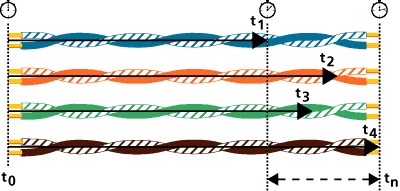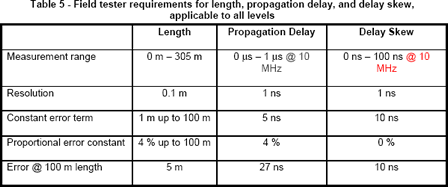遅延時間差 - DTX CableAnalyzer
Propagation (delay skew) is the difference between the propagation delay on the fastest and slowest pairs in a UTP cable. Some cable construction employ different types of insulation materials on different pairs. This effect contributes to unique twist ratios per pair and to delay skew.

Delay skew is important because several high-speed networking technologies, notably Gigabit Ethernet, use all four pairs in the cable. If the delay on one or more pairs is significantly different from any other, then signals sent at the same time from one end of the cable may arrive at significantly different times at the receiver. While receivers are designed to accommodate some slight variations in delay, a large delay skew will make it impossible to recombine the original signal.
Propagation Delay will of course change with frequency. ANSI/TIA-1152 requires field testers to make the measurement at 10 MHz.

結果の解釈
Well-constructed and properly installed structured cabling should have a delay skew less than 50 nanoseconds (nSec) over a 100-meter link. Lower delay skew is better. Anything under 25 nSec is excellent. Delay skew between 45 and 50 nanoseconds is marginally acceptable.
トラブルシューティングの推奨事項
If the delay skew is high, provided the intended application is a 2-pair application such as 10BASE-T or token ring, the application should still perform. If one pair is much higher or lower in delay than the others, very high delay skew may result. Examine the delay results for each pair. If one pair exhibits uncharacteristically high or low delay, re-examine the installation.








